High tip expectations, hidden receipt fees cause customers to question service culture
ASHEVILLE - Last autumn, Brandon Tarbert — who often visits Asheville for work — stopped in a farmer's market in his home of New Jersey, to peruse the assortment of local cheese at a vendor's booth.
He made his selection and prepared to pay the marked price for the cheese but was surprised to see an option to leave a tip on the payment tablet.
"This is a wild moment where someone's asking me to tip for just buying a normal product," Tarbert said. "There's no service that went into it, it wasn't like they made me a cup of coffee. I pointed at the cheese, they gave me the cheese, I paid for the cheese and there's a tip prompt. I felt like at that moment we had jumped the shark."
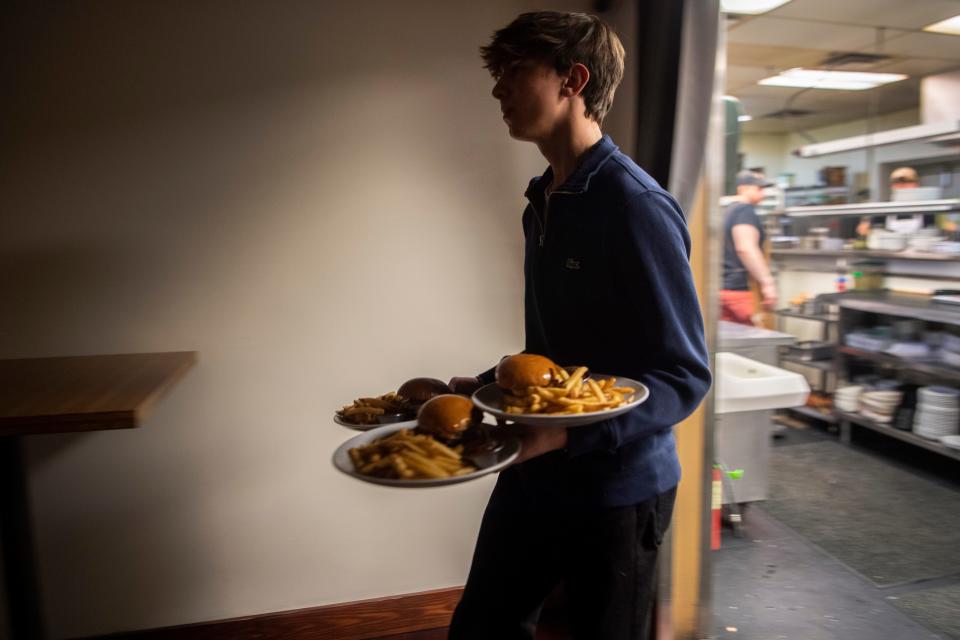
Tarbert, who has worked for many years in restaurants and bars, dines out whenever he is in Asheville. He said he feels what's become known as "tipping fatigue" due to the increased prompts for tips and higher expectations for the amount that should be tipped ― or "tipflation."
Jeffrey Dorfman, Hugh C. Kiger Professor of Agricultural and Resource Economics at North Carolina State University, said over the last five to 10 years, the debate of food service industry wages versus the cost of living has resulted in a shift of customary tip for dine-in from 15% to 20%, likely accelerated by the pandemic, but one that was already underway.
Tarbert said he's noticed the tipping culture in the U.S. has become more demanding in recent years ― and he isn't alone.
Consumers also have expressed experiencing sticker shock when totals are tallied and the bill includes hidden costs, such as service and carryout fees, prompting the question of whether surplus fees introduced in 2020 to support food and beverage industry workers during the COVID-19 pandemic are still necessary in 2024.
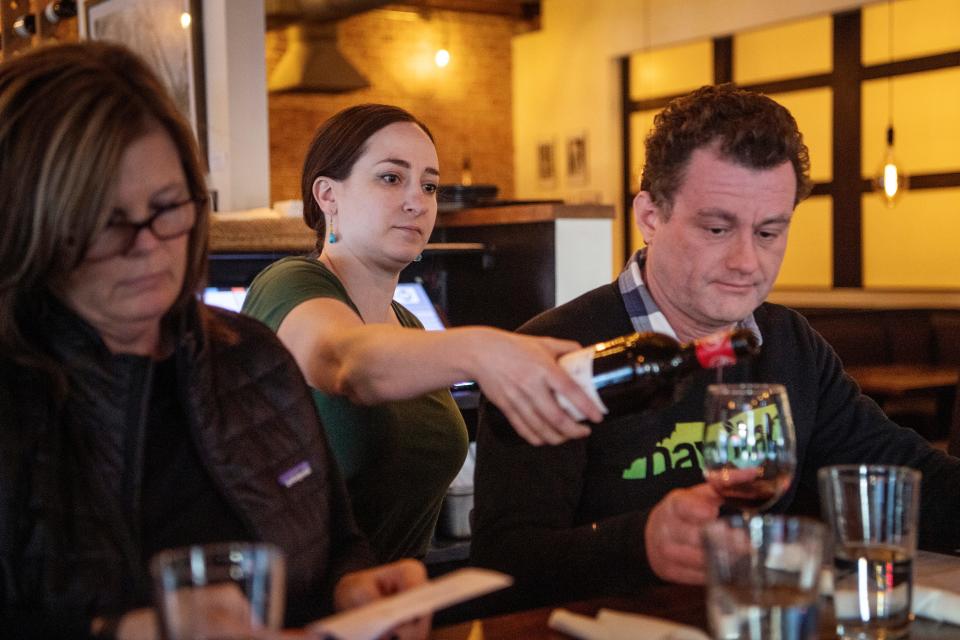
Asheville diners bogged down by inflation and societal pressures to tip and tip more, have spoken out on social media about tipping and surplus charges.
Some call for eliminating the tipping model and extra fees stating that businesses can only "keep nickel and diming everyone before they finally get fed up" and urging the community to "hold business owners accountable for paying staff a living wage" instead of customers' tips making up employees' wages.
Meanwhile, others say the nixing gratuity may be no better for customers or the employees and the restaurants, breweries, bars and cafés where they work.
Receipt confusion
Suggested tip calculations and promotional pricing on receipts have added to the confusion and spurred outrage.
Last November, Michael Harman, a business developer and former 15-year restaurant worker, joined a friend for dinner at Avenue M, where he’s dined many times. On this occasion, however, he noticed that the suggested tip percentages printed at the bottom of the bill didn’t match its corresponding dollar amount.
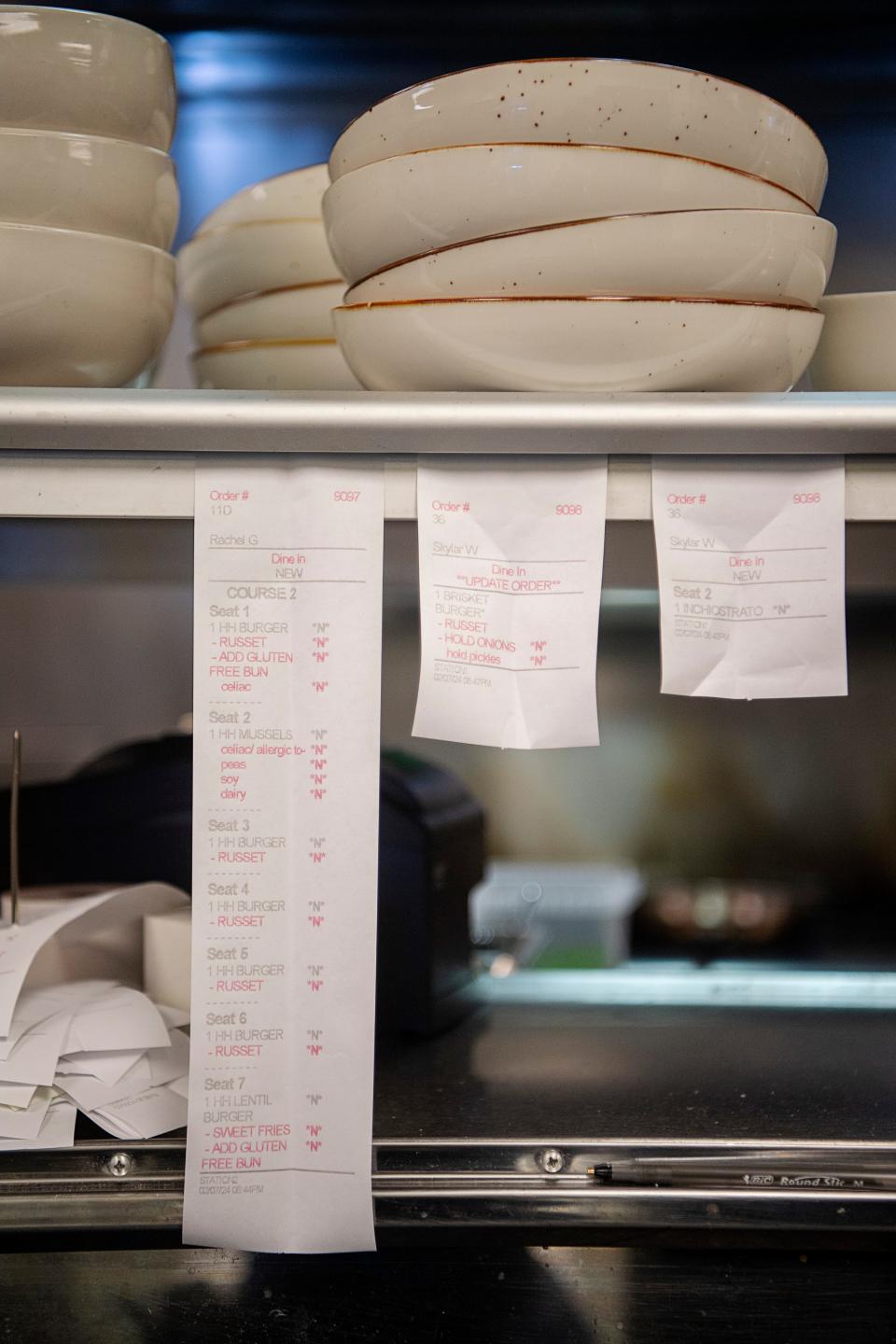
On a check for $45.47, the suggested gratuity printed on the receipt calculated 15% to be $8.62 for a total of $54.09. The list continued with tip amounts for 20%, 25% and 30%. When Harman did the math, he realized 15% of $45.47 would be $6.82.
“I’ve gone there many times and I’ve never seen that issue before,” Harman said.
Avenue M: What to know about North Asheville restaurant's new chef, upgrades
Avenue M co-owner Tony Creed said a third-party point-of-sale system, Exatouch, calculates the tipping suggestions based on subtotals before discounts.
Harman's order of two entrées and a bottle of wine was originally $115. A Wednesday Wine promotion discounted the bottle of wine by half-price, knocking $30 off and bringing the subtotal to $85. Harman and his friend split the bill, bringing Harman’s total to $45.47, before the tip.
Harman’s bill was explained but the situation is an example of how receipts may be confusing for customers, and questions if consumers can and should blindly trust what’s presented to them.
Unexpected charges
Sammi Burke, who works at a local nonprofit, said she sometimes uses the suggested tips on receipts as a guide but is becoming more conscious of checking the math herself as she's aware that restaurants may tack on other fees unknown to diners until they receive the check.
“I don’t like being surprised at the end with one of those surcharges because it feels a little shady,” Burke said.
In November, the Federal Trade Commission proposed the “Rule on Unfair or Deceptive Fees” rule, which is now in revision, to prohibit restaurants and prepared food and grocery delivery services from adding a kitchen, hospitality, service, temporary inflation fees and other hidden, bogus and unexpected fees that become costly to consumers.
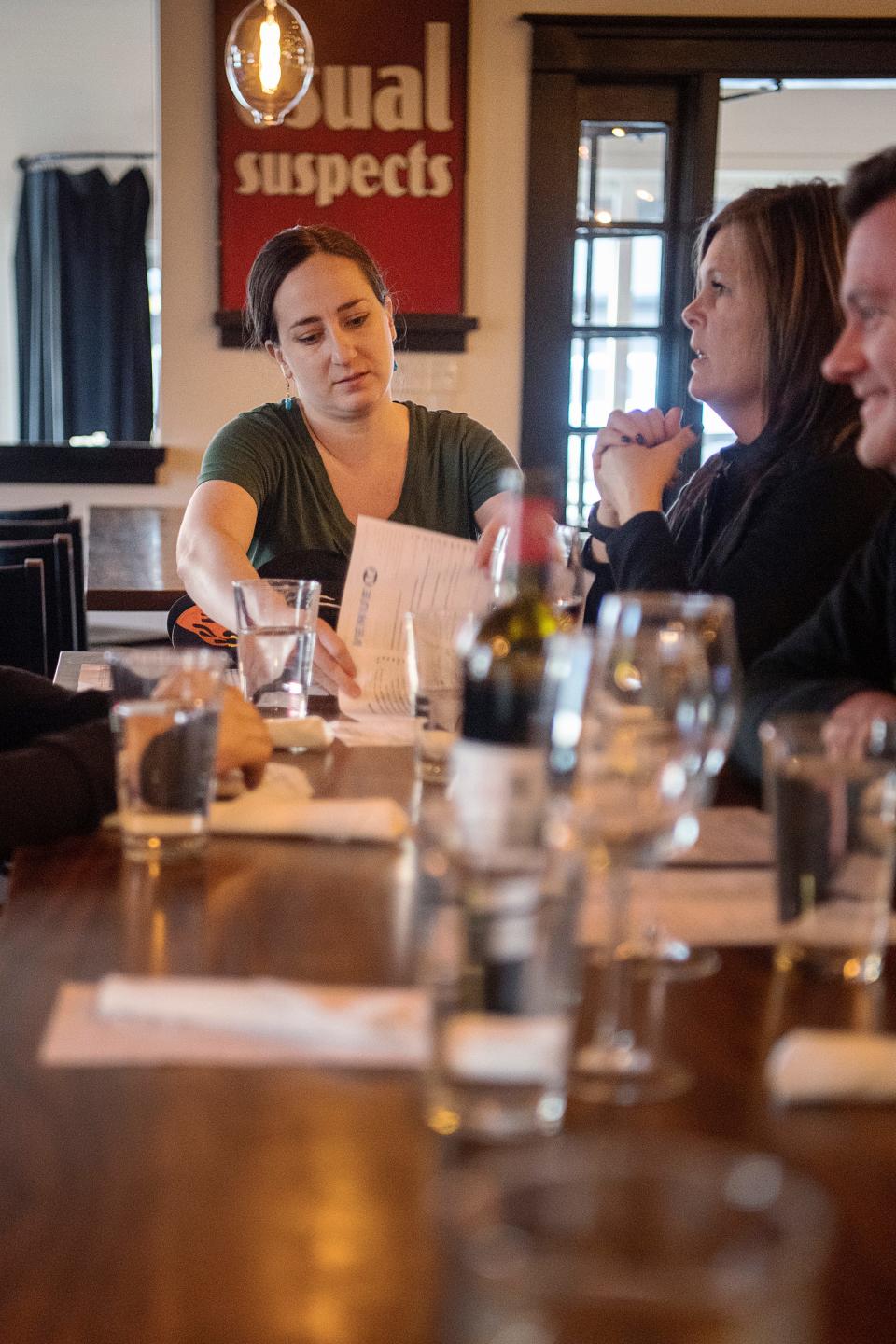
Creed said Exatouch charges an average of 3.5%, depending on the credit card company. Credit card fees are included in Avenue M’s menu prices, which he said is customary for many restaurants. However, during the pandemic, some businesses began to list and include additional fees on receipts for customers to see.
Creed said some restaurants are passing credit card fees along to the diners or adding a 5% fee for the back-of-house staff or health insurance, and there are more fees that customers may not readily notice.
“Some owners are using that to supplement their portion of paying wages so it’s still off-setting the cost of labor to customers,” said Jen Hampton, lead organizer of the Asheville Food and Beverage United, which recently became a labor union for the service industry workers.
Creed said abandoning the traditional tipping model depends on what restaurant customers are willing to pay for menu items.
“I would much rather have the tip built into the price and not have to have me be the decider of how much someone at the other side of the table makes that day,” Tarbert said. “It is surprising to me that the obligation to provide a wage to someone has somehow shifted from the business owner to the customer.”
Tipping vs. living wage
Hampton said people may believe that tipping has gotten out of control but some workers completely rely on tips to provide their wages.
In North Carolina, the minimum wage is $2.13 for tipped employees.
Living wage: Asheville and Buncombe County living wage increases 9% amid soaring housing costs
High cost of living: Answer Man: Asheville faces highest rent in NC; How much funding for affordable housing?
In January, Just Economics, an economic justice advocacy organization in Asheville, announced that the minimum living wage in 2024 in Buncombe County is $22.10 an hour.
“It’s that disconnect. The real issue is that workers aren’t being paid a real living wage,” Hampton said.
What is customary for tipping?
Diners have expressed feeling pressured or judged when it’s time to leave a tip, even if not directly confronted. They're concerned that they will be negatively perceived for not tipping or tipping less for certain services.
The customary tipping amount for dine-in, to-go and delivery services ― or if one should tip at all, depending on the situation ― is an unwritten rule they're attempting to figure out.
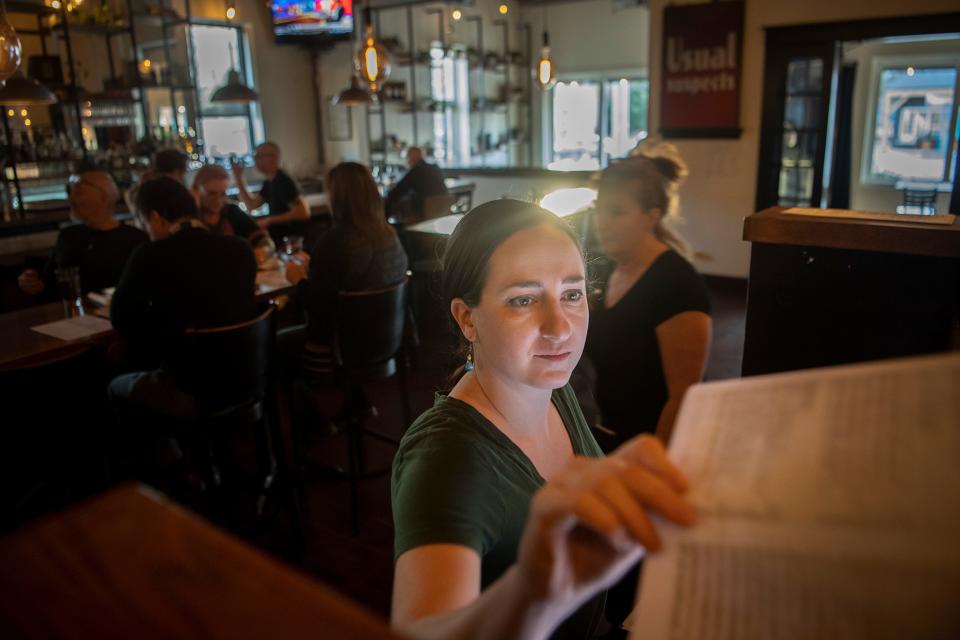
Hampton argues that the base for tipping should be 20%, particularly when dining out.
Rebecca Boyd, a former service industry worker, said she tips 20% or more unless something "catastrophic" happens during the service. When she can’t afford to tip at least 20% she doesn’t dine out. She may tip less if ordering takeout.
Burke said she dines out two to three times a week, including at coffee shops and bars. Her standard tipping amount is 20% for a traditional seated dine-in restaurant but less for counter service, 15% for takeout and 20% for delivery, on average.
Tarbert said his standard tipping amount is 20% for dine-in, depending on the service. On delivery, he tips 15%-20% and for takeout 10%.
“Nowadays, I’ve seen some presumptuous people start at 20% and not even provide an option for anything below 20% which I find surprising,” Tarbert said.
Yet, some consumers have noticed establishments have set their suggested tip percentages to begin at least at 25%.
Boyd said the tipping fatigue has extended outside of food and beverage businesses.
“I went to a concert and the people selling T-shirts, there was an option to tip them. I think it’s dangerous territory when we start relying on people purchasing the services to fill that gap,” Boyd said.
Screen payment pressure
Dorfman said the pandemic, in conjunction with a wider spread adoption of Square and other tablet-based payment systems, is attributed to increasing tipping levels for counter service dine-in, to-go and delivery. He said prompting customers to choose a tip amount on the digital payment screen has led to a huge increase in average tips.
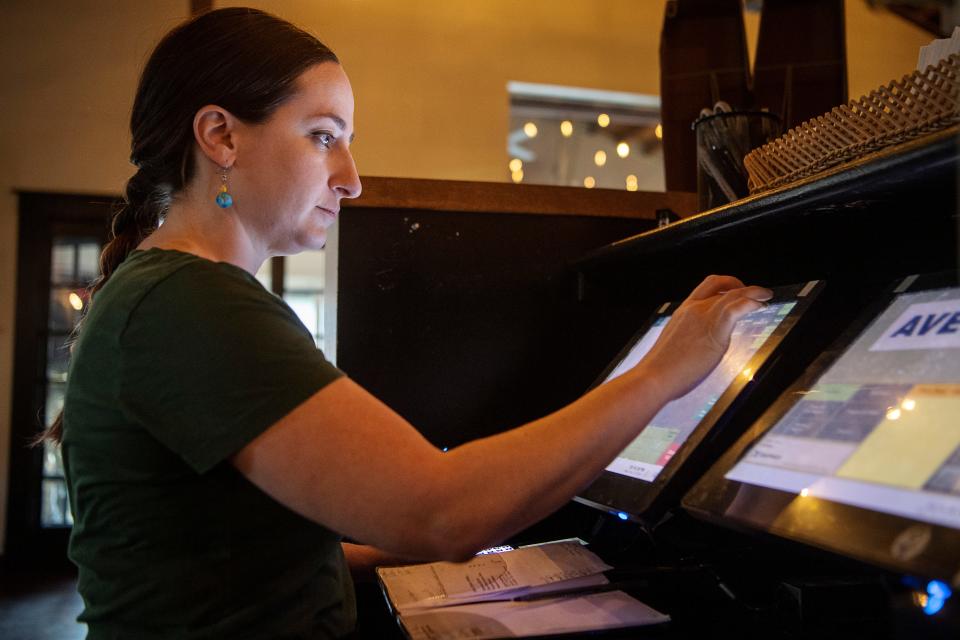
“Customers often grumble a bit about suddenly tipping people for to-go orders and (its) impact on affordability but they are paying and workers are winning,” the N.C. State economics professor said.
According to PYMNTS, a global e-commerce and online payments analytical research company, consumers are likely to tip roughly 15% when prompted on a digital screen, or 50% more than what they drop in a traditional tip jar.
If purchasing prepackaged items only, like a can of soda or a bag of chips, Tarbert said he doesn’t leave a tip. He reconsiders when the tablet is flipped around at the counter and a worker or customer is looking.
Burke said she feels criticized for changing a tip to a lower, custom amount.
“When you are in line with people behind you, it’s like ‘Are they watching me? Are they going to judge me if I tip nothing or a dollar?’ It feels like there’s a lot of pressure,” Burke said.
Hampton said it's "an ugly kind of dynamic" that customers may feel like they're coerced into tipping but workers don't like pandering to customers to pay their rent.
Yet, the traditional tipping model continues to put pressure on all parties.
"Sometimes you just want to buy something instead of wondering, ‘What should I tip them?’" Tarbert said. "It turns into this moralistic question. I just want a cup of coffee. I just want to get a bagel.”
Stories you may have missed:
Asheville food, beverage union confirmed, leaders plan next steps
Communal hub with café, museum, event space aimed to uplift Asheville's Black community
Asheville and Buncombe County living wage increases 9% amid soaring housing costs
Tiana Kennell is the food and dining reporter for the Asheville Citizen Times, part of the USA Today Network. Email her at tkennell@citizentimes.com or follow her on Instagram @PrincessOfPage. Please support this type of journalism with a subscription to the Citizen Times.
This article originally appeared on Asheville Citizen Times: Tipping culture, hidden fees push diners to tipping point

